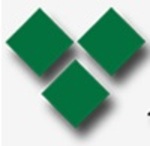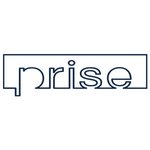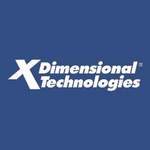Description

OneShield Policy

tigerlab
Comprehensive Overview: OneShield Policy vs tigerlab
Let's explore OneShield Policy, tigerlab, and UIS Policy Administration, focusing on their primary functions, target markets, market share, user base, and key differentiating factors.
OneShield Policy
a) Primary Functions and Target Markets
- Primary Functions: OneShield Policy offers comprehensive policy administration that includes policy processing, billing, claims, and analytics. It is designed to automate and streamline the insurance policy lifecycle from quote to claim.
- Target Markets: It primarily targets insurance carriers, Managing General Agents (MGAs), and large insurance brokers. It serves multiple lines of business, including personal, commercial, and specialty insurance.
b) Market Share and User Base
- Market Share and User Base: OneShield has a significant presence, especially in North America, due to its strong focus on mid-to-large insurers. Its flexible architecture and robust features help it maintain a strong market position, although it is not as dominant globally compared to larger legacy system providers.
c) Key Differentiating Factors
- Differentiation: One of OneShield's main differentiators is its configurability and flexibility. Users can tailor the solutions to specific business needs without heavy reliance on custom coding. It also offers deep integration capabilities with third-party systems.
Tigerlab (tigerlab Insurance Management System)
a) Primary Functions and Target Markets
- Primary Functions: Tigerlab provides a cloud-based insurance management platform that covers policy management, claims handling, and customer relationship management. It emphasizes ease of use and rapid deployment to support digital transformation efforts in insurance.
- Target Markets: Its solutions are geared towards insurers, brokers, and MGAs with particular interest in innovation-driven markets. It serves both small and medium enterprises as well as new insurtech firms looking for agile solutions.
b) Market Share and User Base
- Market Share and User Base: Tigerlab is heavily focused on providing solutions for emerging markets and digital-first insurance companies. While it may not have the vast user base of more established players, it is gaining traction rapidly in niches that require flexibility and innovation.
c) Key Differentiating Factors
- Differentiation: The emphasis on cloud technology and modularity stands out. Tigerlab's ecosystem approach allows insurers to pick and choose functionalities, effectively customizing the system to their needs. The platform’s user-friendly interface and quick implementation times are also key selling points.
UIS Policy Administration
a) Primary Functions and Target Markets
- Primary Functions: UIS offers end-to-end policy administration services that encompass underwriting, rating, billing, and claims. The system aims to provide efficiency and scalability through a unified platform.
- Target Markets: UIS typically targets legacy insurers that are looking to modernize their policy administration systems. It’s geared towards mid-tier to large insurers across various insurance lines.
b) Market Share and User Base
- Market Share and User Base: UIS has a presence in traditional insurance markets where there's a significant need for modernization of existing systems. Its market share is modest when compared to giants in the industry, but it retains a solid base of users who prefer comprehensive modernization solutions.
c) Key Differentiating Factors
- Differentiation: UIS differentiates itself with strong customer support and a focus on modernization pathways. The platform is particularly attractive to insurers seeking to transition from outdated legacy systems to more streamlined operations without disruption.
Comparative Overview
- Market Focus: While OneShield and UIS are more focused on established insurance players and larger systems, tigerlab caters to the rapidly evolving digital and insurtech sectors, offering nimbleness and innovation.
- Technology Approach: All three offer robust policy administration solutions, but their technology and delivery methodologies differ. OneShield and UIS tend to be more versatile with full-suite capabilities, while tigerlab emphasizes modularity and cloud solutions.
- Customization and Flexibility: OneShield offers advanced configurability, tigerlab focuses on rapid deployment and ease of use, and UIS provides comprehensive solutions for legacy system overhauls.
- User Base: OneShield and UIS have strong footholds in traditional markets with established insurers. Tigerlab is increasingly popular among new and tech-driven insurance entities.
In conclusion, the choice between these solutions would largely depend on the specific needs of the insurer, their market focus, and their technological requirements. Each system offers unique strengths that cater to different segments of the insurance industry.
Contact Info

Year founded :
Not Available
Not Available
Not Available
Not Available
Not Available

Year founded :
2008
+44 20 3239 0330
Not Available
Switzerland
http://www.linkedin.com/company/tigerlab
Feature Similarity Breakdown: OneShield Policy, tigerlab
To provide a feature similarity breakdown for OneShield Policy, tigerlab, and UIS Policy Administration, let's investigate the core features, user interface comparisons, and any unique features these products may have. These products are designed to assist insurance companies in managing policies, which means they generally include a set of core functionalities, albeit with some variations.
a) Core Features in Common:
-
Policy Management:
- All three platforms provide capabilities for managing different types of insurance policies. This includes policy issuance, renewal, endorsement, and cancellation.
-
Quoting and Rating:
- They offer tools for generating and managing insurance quotes. This involves calculating premiums based on risk factors and policy conditions.
-
Underwriting Support:
- Each offers features to streamline the underwriting process, supporting rule-based decision-making and automating underwriting tasks to the extent possible.
-
Reporting and Analytics:
- These platforms have reporting and data analytics capabilities, enabling insurers to extract insights and create various operational and financial reports.
-
Regulatory Compliance:
- Ensuring compliance with regional and international insurance regulations is a shared feature across these platforms.
b) User Interface Comparisons:
-
OneShield Policy:
- Known for a flexible and customizable user interface, OneShield Policy provides a modern UI with intuitive navigation. It's built to be user-friendly, with drag-and-drop capabilities for ease of workflow customization.
-
tigerlab:
- Tigerlab features a sleek and minimalist design focusing on user experience. Its UI is highly intuitive and designed to offer streamlined navigation, making it accessible even for users with less technical expertise.
-
UIS Policy Administration:
- UIS Policy Administration offers a robust and comprehensive user interface. While not as flashy as some competitors, it provides clarity and straightforward functionality, often emphasizing a scalable and consistent UI experience.
c) Unique Features:
-
OneShield Policy:
- Configurable Product Definitions: OneShield allows insurers to define and customize insurance products without significant IT intervention.
- Advanced Workflow Automation: It supports complex workflows tailored to specific business needs, enhancing operational efficiency.
-
tigerlab (Also known as InsuranceRight):
- AI-Powered Insights: Tigerlab often emphasizes advanced analytics, including AI-driven insights for better risk assessment and decision-making.
- Seamless Integration: Boasts excellent integration capabilities with third-party systems and tools, providing a more connected ecosystem for insurance operations.
-
UIS Policy Administration:
- Legacy System Support: UIS is designed to support integration with legacy systems, making it a preferred choice for insurers looking to modernize without overhauling existing setups.
- Comprehensive Suite: UIS provides a broad array of functionalities beyond policy management, including billing and claims processing in a unified platform.
These comparisons provide a snapshot of how each system holds value for different types of users, with some focusing more on sleek design while others prioritize extensive feature sets or seamless integration capabilities.
Features

Not Available

Not Available
Best Fit Use Cases: OneShield Policy, tigerlab
Each of these policy administration systems offers distinct features and capabilities tailored to different types of businesses, industries, and project scenarios. Here's a detailed breakdown of their best fit use cases:
a) OneShield Policy
Best Fit Use Cases:
-
Complex, Large-Scale Insurance Operations: OneShield Policy is particularly well-suited for large insurance carriers and multiline insurers due to its scalability and comprehensive feature set. It can handle complex insurance products and business processes, making it ideal for enterprises with diverse offerings.
-
Customization Needs: OneShield offers extensive customization capabilities allowing insurers to tailor workflows, rules, and user interfaces. Businesses that require specific workflows or processes that deviate from standard templates will benefit from its flexibility.
-
Integrated Suite Requirements: For companies looking to integrate policy administration with claims, billing, and other insurance modules, OneShield provides a tightly integrated suite of solutions.
Industry Fit:
OneShield is adaptable across multiple insurance verticals, including P&C (Property & Casualty), life, and health insurance sectors. Its ability to handle complex processes makes it suitable for mid-sized to large insurance firms.
b) Tigerlab
Best Fit Use Cases:
-
Agile, Growing InsureTechs and Startups: Tigerlab's modern, cloud-based ecosystem is advantageous for startups and smaller insurance companies prioritizing speed-to-market. Its flexibility supports rapid deployment and iteration, which is beneficial for agile development processes.
-
Digital-First Projects: Companies focusing on digital transformation and seeking a solution that supports digital insurance models will find Tigerlab's digital-centric approach attractive.
-
Customer Experience Focus: Tigerlab emphasizes user-friendly interfaces and customer experience, making it ideal for firms aiming to enhance their customer engagement and interaction through intuitive platforms.
Industry Fit:
Particularly suitable for emerging insuretech markets or digital brokers looking for a cloud-based, easily adaptable solution. Its user-friendly platform caters well to small to mid-sized companies across diverse insurance lines.
c) UIS Policy Administration
Best Fit Use Cases:
-
Efficiency in Standardizing Processes: UIS Policy Administration is ideal for businesses looking to standardize and streamline their policy management processes. It offers fundamental capabilities that ensure efficient policy administration.
-
Cost-Conscious Small to Medium Enterprises (SMEs): For smaller companies needing an affordable yet reliable solution without the complex needs of larger enterprises, UIS offers a cost-effective choice.
-
Rapid Implementation: UIS often comes with out-of-the-box functionality that supports quick implementation, which is advantageous for companies needing a fast turnaround.
Industry Fit:
Best suited for small to medium-sized insurance companies that require straightforward and efficient policy administration without extensive customization needs. It is versatile across various insurance lines but particularly beneficial for companies with standard operational needs.
d) Catering to Different Industry Verticals or Company Sizes
-
OneShield Policy: Targets medium to large insurance companies across multiple sectors needing robust and integrated systems to manage complex operations. It is meant for companies that want a comprehensive solution covering the entire insurance lifecycle.
-
Tigerlab: Appeals mainly to small to mid-sized companies and startups in the insuretech space and traditional insurers evolving into digital models. Its flexible, cloud-based system is tailored for those focusing on innovation and customer-centric solutions.
-
UIS Policy Administration: Serves smaller to medium companies looking for an efficient solution without the need for deep customization. It suits businesses with standard policy management requirements looking for operational efficiency and easy-to-use administrative processes.
In summary, the best choice among these systems depends on a company's size, complexity of operations, speed-to-market needs, and focus on digital transformation or cost efficiency. Each offers unique strengths that align with different strategic objectives and operational requirements.
Pricing

Pricing Not Available

Pricing Not Available
Metrics History
Metrics History
Comparing teamSize across companies
Conclusion & Final Verdict: OneShield Policy vs tigerlab
To provide a conclusion and final verdict for OneShield Policy, tigerlab, and UIS Policy Administration, it’s essential to consider the features, usability, scalability, support, and cost of each product. The best overall value will depend on the specific needs and priorities of the users. Here's a comprehensive analysis:
a) Considering all factors, which product offers the best overall value?
OneShield Policy generally offers the best overall value for larger enterprises due to its comprehensive suite of features, scalability, and strong customer support. Its robust capabilities make it suitable for companies looking for a highly configurable solution with extensive integration capabilities.
b) Pros and cons of choosing each product:
OneShield Policy
-
Pros:
- Highly configurable and scalable, ideal for large enterprises.
- Extensive feature set including billing, claims, and policy management.
- Strong customer support and a track record of reliability.
- Comprehensive integration options with other enterprise systems.
-
Cons:
- Higher cost, which might be prohibitive for smaller companies.
- Complexity can result in a steeper learning curve for implementation and training.
tigerlab
-
Pros:
- Flexible and modern interface with a focus on innovation.
- Good for small to medium-sized businesses looking for agility.
- Competitive pricing, making it more accessible for smaller companies.
- Strong focus on user experience and ease of use.
-
Cons:
- May lack some of the advanced features required by very large enterprises.
- Limited integration capabilities compared to more established players like OneShield.
UIS Policy Administration
-
Pros:
- Balanced feature set at a mid-range price, offering good value for money.
- Suitable for mid-sized companies with adequate scalability.
- Easier deployment and user-friendly interface.
-
Cons:
- May not offer the depth of features found in more specialized solutions.
- Less tailored for large organizations with complex requirements.
c) Specific recommendations for users trying to decide between OneShield Policy vs tigerlab vs UIS Policy Administration:
-
For Large Enterprises: Consider OneShield Policy due to its extensive features, scalability, and robust support system. It's a strong choice for enterprises needing comprehensive policy, billing, and claims management capabilities.
-
For Small to Medium Businesses: Tigerlab offers a modern, flexible solution with a strong focus on innovation and an intuitive user experience. Its pricing and ease of use make it very appealing to companies in growth phases.
-
For Mid-Sized Enterprises with Moderate Requirements: UIS Policy Administration provides a balanced approach that combines necessary features with cost efficiencies. It suits companies that require a reliable, straightforward solution without the complexity of larger systems.
In conclusion, while OneShield Policy provides the best value for large enterprises looking for a comprehensive and highly configurable solution, tigerlab and UIS Policy Administration serve niche markets with their strengths in cost-efficiency and ease of use. Companies should assess their size, budget, technological needs, and long-term growth plans to choose the most suitable policy administration system.
Add to compare




